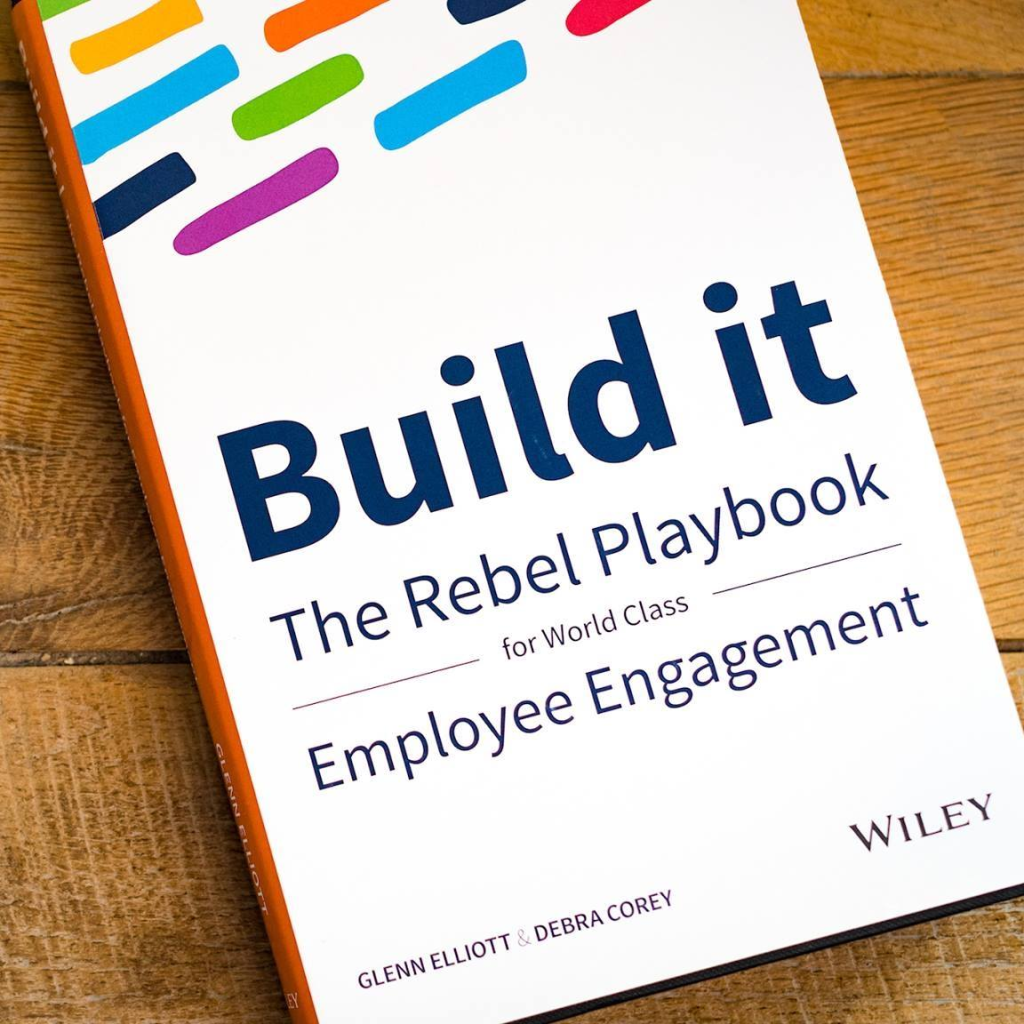The “Engagement Bridge” is a concept created by Glenn Elliott and Debra Corey in their book “Build it: The Rebel Playbook for World-Class Employee Engagement”

The Bridge represents the connection between engaged employees and successful businesses, with the authors using this metaphor to illustrate how employee engagement is instrumental in driving organisational performance and achieving business goals.
The Engagement Bridge consists of ten elements, all essential components for building a strong foundation of employee engagement within an organisation.
Elliott and Corey argue that by strengthening each pillar of the Engagement Bridge, organisations can create a workplace culture where employees are motivated, committed, and aligned with the company’s mission and values. This, in turn, leads to improved productivity, innovation, and overall business success.
They emphasise the importance of actively nurturing and maintaining the Engagement Bridge to ensure sustained levels of employee engagement over time. By focusing on fostering meaningful connections with employees, providing opportunities for growth and development, and recognising and rewarding their contributions, organisations can strengthen the Engagement Bridge and drive long-term success.
Whilst The Engagement Bridge model has ten elements, Elliott and Corey describe them in five parts:
1. Open & Honest Communication
2. Purpose, Mission & Values
3. Leadership & Management
4. Job Design, Learning & Recognition
5. Pay & Benefits, Workspace & wellbeing
In this article we will summarise parts one and two, with the remainder being covered in a follow-up part 2 blog.
1. Open & Honest Communication
Quite simply the foundation of The Engagement Bridge! And why? Because it is so closely linked to employee trust. Without trust, it’s almost impossible to imagine an engaged culture where people voluntarily put the company, its mission and purpose first.

Five ways to successfully embed open and honest communication:
Default to transparency – make everything open, visible and public unless something absolutely has to be made private or closed.
Explain why – communicate the reason and thinking behind key decisions. This always comes before getting into the how.
Make room for dissent, disagreement and diversity of opinion – listen constantly, value diversity of opinion and create teams that include people with different perspectives.
Communicate continuously with warmth and emotion – think about how people will
Invest in lateral transparency – where peers are open and honest with each other and feel safe in being candid.
2. Purpose, Mission & Values
With a solid foundation of honesty and transparency established, having a clear direction and purpose, plus a consistent way of behaving drives employee engagement. There is something deeply human about the need to feel part of something bigger than yourself (call it a tribe, community, movement, club or association) – something that feels worthwhile, purposeful and worth the sacrifice of your time.
We’ve written articles in the past on purpose, vision, mission and values.
Elliott and Corey describe four key ways of embedding powerful, inspirational & aspirational Purpose, Mission and Values:
Communicate continually – find new and different ways to tell stories from different perspectives.
Implement without reservation – don’t tolerate even high performers who fail to live the values. Hire, promote, reward and fire according to them.
Refresh cautiously – treat your values with respect, but know that cultures are alive and need progression.
Reward and recognise – provide tangible monetary and non-monetary incentives for living the values.
These first two-parts of The Engagement Bridge model form the fundamentals to building employee engagement.
Read part 2 for the remaining elements that will bring your employee engagement to life.
This article is based on the content of Build it: The Rebel Playbook for World-Class Employee Engagement by Glenn Elliott and Debra Corey. Full credit is given to the authors.
To read more, order the book here.
